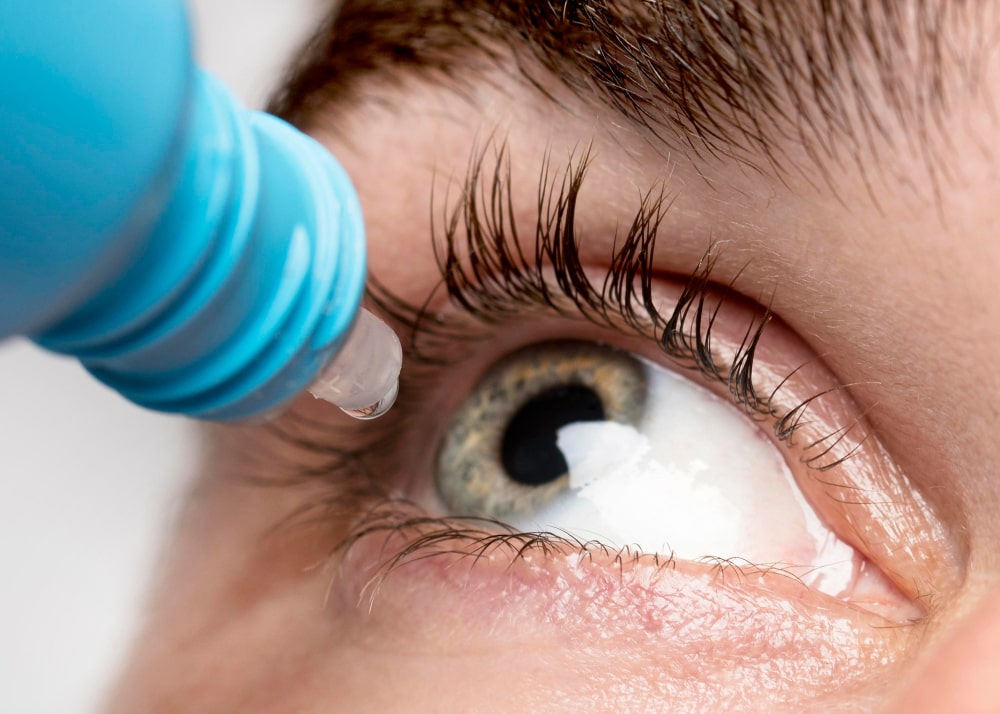Combines Extensive Contact Lens & Pharma Experience
Corneal Ulcers
Based on a recent report of Future Market Insights (FMI) the global corneal ulcer treatment market will grow at an annual growth rate of more than 5.5% during 2019-2029 to reach about US$ 1 Bn mark by 2029 end [https://www.bloomberg.com/press-releases/2020-02-13/corneal-ulcer-treatment-will-create-a-billion-dollar-market-by-2029-antibiotics-to-remain-leading-drug-category-proj]. The report had the following key takeaways for the corneal ulcer treatment market: Based on a recent report of Future Market Insights (FMI) the global corneal ulcer treatment market will grow at an annual growth rate of more than 5.5% during 2019-2029 to reach about US$ 1 Billion mark by 2029 end [https://www.bloomberg.com/press-releases/2020-02-13/corneal-ulcer-treatment-will-create-a-billion-dollar-market-by-2029-antibiotics-to-remain-leading-drug-category-proj]. The report had the following key takeaways for the corneal ulcer treatment market: * Antibiotics will remain the leading drug treatment category, with a projected revenue share of 77% in 2029. * Antifungals are set to exhibit promising growth in sales during the forecast period. * Eye drops continue to be a preferred form of corneal ulcer treatment. * About 50% of corneal ulcer treatment drugs are distributed through retail pharmacies. * Bacterial keratitis will remain a prevalent form of corneal ulcer during the forecast period. * North America will remain a lucrative regional market for corneal ulcer treatment. Based on the report, the main growth drivers are: * Increasing number of clinical trials targeting development of cost-effective treatment options will fuel market growth. * Improving research funding and enhanced epidemiological knowledge are major growth levers for the market. * Emergence of alternative treatment methodologies, such as dual therapy, is driving the demand. Our immediate focus is on treatment of microbial keratitis, though the treatment will be effective for all bacterial ulcers. We also plan to develop contact lenses for antifungal therapy (natamycin loaded lenses) to play in both the antibacterial and antifungal segments. Our technology also affords the possibility of release of multiple drugs which could be very useful for the treatment of corneal ulcers.

- Antibiotics will remain the leading drug category, with a projected revenue share of 77% in 2029
- Antifungals are set to exhibit promising growth in sales during the forecast period.
- Eye drops continue to be a preferred form of corneal ulcer treatment.
- About 50% of corneal ulcer treatment drugs are distributed through retail pharmacies.
- Bacterial keratitis will remain a prevalent form of corneal ulcer during the forecast period.
- North America to remain a lucrative regional market for corneal ulcer treatment
Based on the report, these are the main growth drivers:
- Increasing number of clinical trials targeting development of cost-effective treatment options will fuel market growth.
- Improving research funding and enhanced epidemiological knowledge are major growth levers for market.
- Emergence of alternative treatment methodologies such as dual therapy is driving the demand.
Our immediate focus is on treatment of microbial keratitis though the treatment will be effective for all bacterial ulcers. We also plan to develop contact lenses for antifungal therapy (natamycin loaded lenses) to play in both the antibacterial and antifungal segments. Our technology also affords the possibility of release of multiple drugs which could be very useful for the treatment of corneal ulcers.
